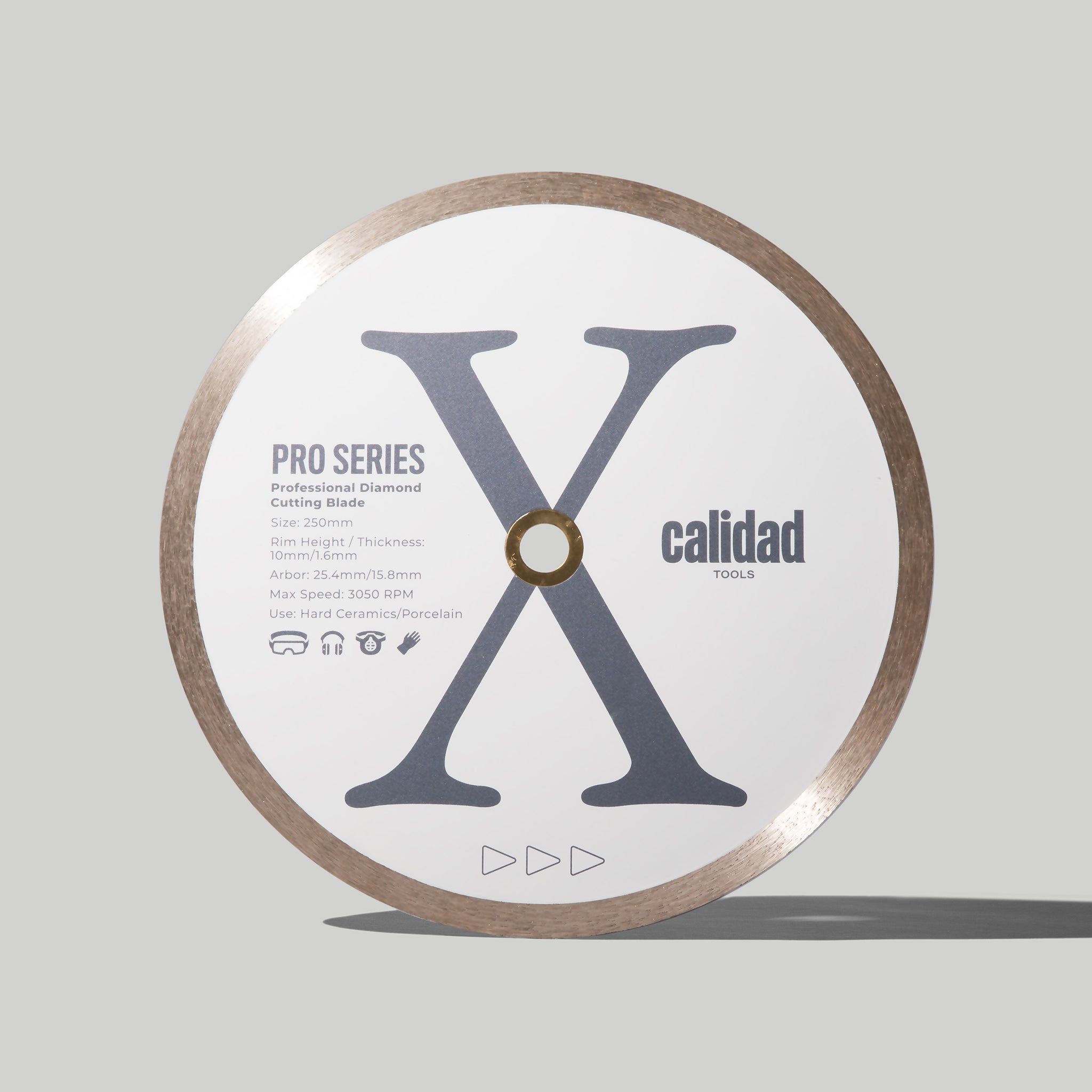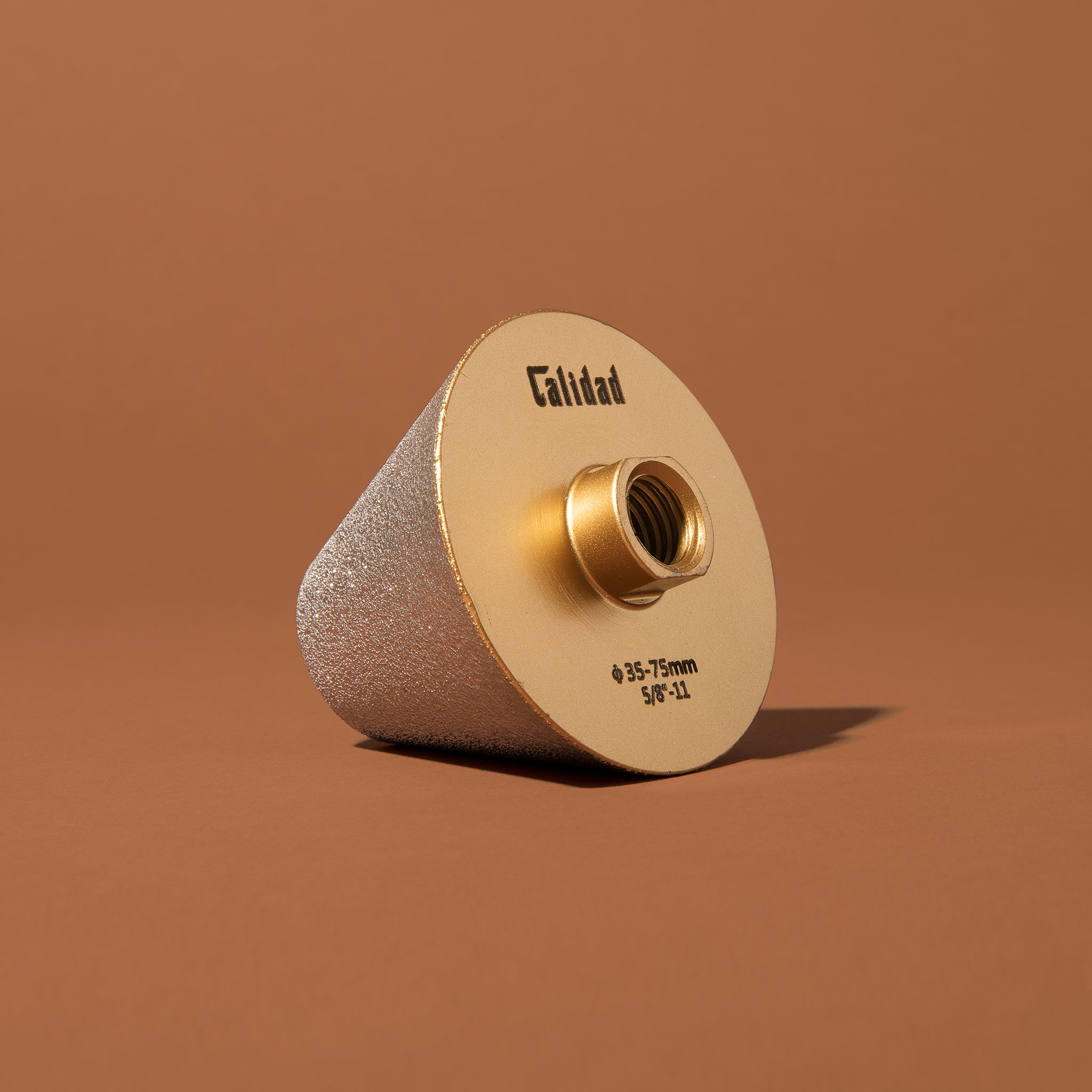How to Fit Tile Trim: A Comprehensive Guide

Fitting tile trim is an essential step in achieving a polished, professional finish for any tiling project. Tile trim not only enhances the aesthetic appeal of tiled surfaces but also serves a functional purpose by protecting the edges of tiles from chipping and damage.
In this comprehensive guide, we'll cover everything you need to know about how to fit tile trim, from choosing the right type to installing it seamlessly. Although we don't have tile trim in our offer, we have all the tools a DIY or professional tiler would ever need.
Check out our store today and get premium quality grinder blades, circular saw blades, diamond hole saws, hole saw drilling bits, and more.
What is Tile Trim?
Tile trim is a finishing material used to cover the exposed edges of tiles, giving them a neat and tidy appearance. It comes in various materials, including metal, plastic, ceramic, and stone, each offering different benefits and aesthetic options.
Tile trim is particularly useful for protecting the edges of tiles in high-traffic areas and wet areas like bathrooms, preventing chips and ensuring a smooth transition between tiled surfaces and other materials.
Choosing the Right Tile TrimSelecting the right tile trim is crucial for achieving a seamless and professional finish.
Here are some key considerations when choosing tile trim:
- Material — Tile trims come in various materials. Metal tile trim is durable and provides a sleek, modern look, while plastic trim is more affordable and easy to cut. Ceramic and stone trims can blend seamlessly with tile surfaces, offering a more cohesive appearance.
- Finish — The finish of the tile trim can complement or contrast your tiles. Metallic finishes like chrome or brushed nickel can add a touch of luxury, while matte finishes provide a subtle, understated look.
- Profile — Tile trims are available in different profiles, such as straight edge, round edge, and box trim. The choice of profile depends on the design aesthetic you’re looking to achieve and the specific needs of your tiling project.
- Depth — It's essential to match the depth of the trim to the thickness of your tiles. For example, if your tiles are 10mm thick, you should choose a 12.5mm trim to ensure a smooth fit and clean finish. This extra allowance accounts for the adhesive layer behind the tiles.

How to Cut Tile Trim
Cutting tile trim accurately is vital to ensure a clean, professional finish.
Here’s a step-by-step guide on how to cut your tile trim:
- Measure and Mark — Measure the length of trim needed and mark it with a pencil. Double-check your measurements to avoid mistakes. Remember the adage, "Measure twice, cut once."
- Choose the Angle — For corners and angles, you’ll need to cut the trim at a 45-degree angle. Use a mitre box to ensure precise cuts.
- Cut the Trim — Place the trim in the mitre box and use a hacksaw to cut along the marked line. Hold the trim firmly against the edge of the mitre box to ensure a clean cut. For straight cuts, simply cut at a 90-degree angle.
- Test Fit — After cutting, test the fit of the trim pieces around the tile. Make sure the separate pieces fit together snugly and leave a clean finish.
How to Install Tile Trim
Installing tile trim correctly is key to achieving a seamless, polished look. Follow these steps to fit tile trim:
- Prepare the Area — Before you start, make sure the tiled area is clean and dry. Remove any dust or debris that might interfere with the adhesive.
- Apply Adhesive — Using a notched trowel, spread tile adhesive along the edge where the trim will be installed. Ensure a consistent layer of adhesive to hold the trim in place.
- Position the Trim — Press the tile trim into the adhesive bed, ensuring it aligns perfectly with the edge of the tiles. The adhesive should hold the trim firmly in place.
- Install the Tiles -- Apply adhesive to the back of the tile and press it firmly against the trim. This ensures a strong bond between the tile and the trim. Repeat this process for all tiles along the edge.
- Secure the Trim — In wet areas like bathrooms, leave a 2mm gap between the trim and the tile edge. Later, this gap will be filled with grout to ensure a watertight seal.
- Wipe Off Excess Adhesive -- If any adhesive seeps out from under the trim, wipe it away immediately with a damp cloth to ensure a clean finish.
- Let the Adhesive Set -- Allow the adhesive to set overnight before proceeding to grout the spaces around the trim.
- Grout the Edges -- Once the adhesive has set, apply grout to the gaps between the tiles and trim. Use a sponge to smooth the grout and remove any excess. Allow the grout to dry completely.

Tips for a Professional Finish
- Use High-Quality Materials -- Opt for high-quality tile trim and adhesive to ensure durability and a polished look.
- Precision is Key -- Take your time to accurately measure and cut the trim. Precision will make a significant difference in the final appearance.
- Safety First -- Wear appropriate protective gear when cutting and installing tile trim to avoid injuries.
- Consult the Experts — If you're unsure about any part of the process, don’t hesitate to seek advice from professionals.
Can You Install Tile Trim After Tiling?
While it's generally best to install tile trim during the tiling process, it is possible to install trim after tiling. Some profiles are designed for retrofitting over existing tile edges. However, this may require additional adhesive and careful alignment to achieve a seamless finish.
Maintenance and Care
To keep your tile trim looking its best, regular maintenance is essential. Clean the trim with a damp cloth and mild detergent to remove dirt or grime. Avoid using abrasive cleaners that could scratch the surface. In wet areas, periodically check the grout and sealant to ensure they remain intact and watertight.
Conclusion
Fitting tile trim is a crucial step in any tiling project, providing both aesthetic appeal and functional protection for your tiles. By choosing the right trim, cutting it accurately, and installing it correctly, you can achieve a seamless and professional finish.
Don't forget to check out our store for premium-quality tiling tools that won't burn a hole in your wallet!












